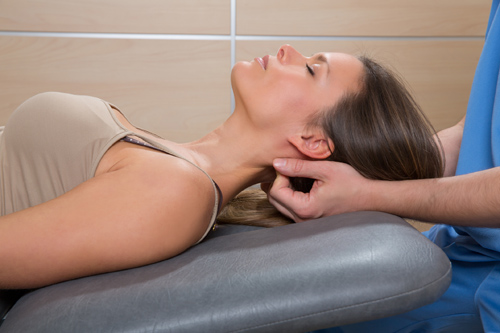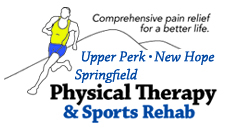 Massage therapy is the assessment and treatment of the soft tissues and joints of the body by hands-on manipulation. It uses a system of strokes that include gliding, kneading, friction, pressure, tapping and vibrating. Massage therapy is used to reduce pain, improve circulation and promote relaxation and stress relief.
Massage therapy is the assessment and treatment of the soft tissues and joints of the body by hands-on manipulation. It uses a system of strokes that include gliding, kneading, friction, pressure, tapping and vibrating. Massage therapy is used to reduce pain, improve circulation and promote relaxation and stress relief.
Massage therapy melts away stress and tension, relieving associated headaches and muscular aches and pains. Massage therapy also aids in the healing process from injury or overuse and is an excellent form of preventive healthcare. Its purpose is to develop, maintain, rehabilitate or augment physical function and relieve pain, and it is the perfect complement to physical therapy care. Massage therapy is beneficial in the treatment of many conditions, including:
- Chronic pain, stress & tension
- Headaches
- Sprains & strains
- Tendonitis
- Bursitis
- Pregnancy & postpartum discomfort
- Postural disorders
- Muscle tightness
- Circulation problems
We have massage therapists on staff who are trained in a variety of massage modalities. The need for and benefits of these massage therapies vary from patient to patient. Our massage therapists will help you choose the best massage method for your specific situation.
Aromatherapy Massage
The use of essential oils (extracted from herbs, flowers, resin, woods, and roots) in body and skin care treatments is known as aromatherapy. Used as a healing technique for thousands of years by the Egyptians, Greeks, and Romans, essential oils aid in relaxation, improve circulation, and help the healing of wounds. Specific essential oils are blended by the aromatherapist and added to a carrier oil, to be used during the massage. Each oil has its own unique characteristics and benefits. Aromatherapy diffusers may be utilized to fill the massage room with the scent of the oils.
Chair Massage
Known as seated massage, chair massage, or on-site massage, this technique involves the use of a specially designed massage chair in which the client sits comfortably. Seated massage includes bodywork and somatic techniques, such as Swedish massage. It is provided to fully clothed clients in a variety of settings.
Deep Tissue Massage
Techniques that utilize deep-tissue/deep-muscle massage are administered to affect the sub-layer of musculature and fascia. These techniques require advanced training and a thorough understanding of anatomy and physiology. The muscles must be relaxed in order to effectively perform deep-tissue massage, otherwise tight surface muscles prevent the practitioner from reaching deeper musculature. It helps with chronic muscular pain and injury rehabilitation, and reduces inflammation-related pain caused by arthritis and tendinitis. It is generally integrated with other massage techniques.
Manual Lymph Drainage
The strokes applied in manual lymph drainage are intended to stimulate the movement of the lymphatic fluids in order to assist the body in cleansing. This is a gentle, rhythmical technique that cleanses the connective tissue of inflammatory materials and toxins, enhances the activity of the immune system, reduces pain, and lowers the activity of the sympathetic nervous system.
Myofascial Release
Myofascial Release is the three-dimensional application of sustained pressure and movement into the fascial system in order to eliminate fascial restrictions and facilitate the emergence of emotional patterns and belief systems that are no longer relevant or are impeding progress. Upon locating an area of fascial tension, gentle pressure is applied in the direction of the restriction. It is an effective therapeutic approach in the relief of cervical pain, back pain, fibromyalgia, scoliosis, neurological dysfunction, restriction of motion, chronic pain, and headaches.
Myofascial Trigger Point Therapy
Based on the discoveries of Drs. Janet Travell and David Simons in which they found the causal relationship between chronic pain and its source, myofascial trigger point therapy is used to relieve muscular pain and dysfunction through applied pressure to trigger points of referred pain and through stretching exercises. These points are defined as localized areas in which the muscle and connective tissue are highly sensitive to pain when compressed. Pressure on these points can send referred pain to other specific parts of the body.
Sports Massage
Sports massage is designed to enhance athletic performance and recovery. There are three contexts in which sports massage can be useful to an athlete: pre-event, post-event, and injury treatment.
• Pre-event massage is delivered at the performance site, usually with the athlete fully clothed. Fast-paced and stimulating, it helps to establish blood flow and to warm up muscles. During the massage, the athlete generally focuses on visualizing the upcoming event.
• Post-event massage is also delivered on site, through the clothes. The intent here is to calm the nervous system and begin the process of flushing toxins and waste products out of the body. Post-event massage can reduce recovery time, enabling an athlete to resume training much sooner than rest alone would allow.
• When an athlete sustains an injury, skillful massage therapy can often speed and improve the quality of healing.
Swedish Massage
Swedish massage is a vigorous system of treatment designed to energize the body by stimulating circulation. Five basic strokes, all flowing toward the heart, are used to manipulate the soft tissues of the body. The disrobed client is covered by a sheet/blanket, with only the area being worked on exposed to the comfort level of the patient/client. Therapists use a combination of kneading, rolling, vibrational, percussive, and tapping movements, with the application of oil, to reduce friction on the skin. The many benefits of Swedish massage may include generalized relaxation, dissolution of scar tissue adhesions, and improved circulation, which may speed healing and reduce swelling from injury.
Thai Massage
Thai massage has been taught and practiced in Thailand for approximately 2,500 years. Historically, manipulation was one of four major branches composing traditional Thai ceremonies. This is based on the theory the body is made up of 72,000 energy lines, of which ten hold top priority. Thai massage also involves peripheral stimulating, meaning it acts as an external stimulant to produce specific internal effects. This point serves as the main division between Thai and Western massage. Thai massage is practiced on a firm mat on the floor instead of on a table, instrumental in the effective use of the practitioner's body weight. Except for the feet, the client remains fully clothed, so draping is not necessary.
Our Pricing for Massage Therap:
- $40 for a half hour, $70 for one hour- We accept all majot credit cards.
Make an Appointment or Schedule a Free Consultation
You'll find advanced care and relief at Upper Perk & New Hope Physical Therapy & Sports Rehab
Upper Perk PT Facility - 2767 Geryville Pike, Pennsburg, PA 18073, Proudly Serves Quakertown PA | View All Locations We Serve
© 2021 Upper Perk Physical Therapy & Sports Rehab, All Rights Reserved
